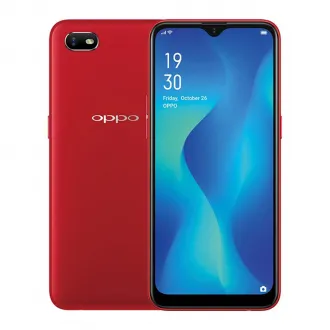Oppo A1k (CPH1923) USB Drivers will help your Windows computer recognize your Android device. Then you can transfer files from computer to Android or even install the stock or custom ROM to your Android device.
Brand: Oppo
Model: A1k (Oppo CPH1923)
Release date: April 2019
Form factor: Touchscreen
Body type: Plastic
Dimensions (mm): 154.50 x 73.80 x 8.40
Weight (g): 170.00
Battery capacity (mAh): 4000
Colours: Black, Red
Display
Screen size (inches): 6.10
Touchscreen: Yes
Resolution: 720x1560 pixels
Protection type: Gorilla Glass
Pixels per inch (PPI): 282
Hardware
Processor: octa-core
Processor make: MediaTek Helio P22 (MT6762)
RAM: 2GB
Internal storage: 32GB
Expandable storage: Yes
Expandable storage type: microSD
Camera
Rear camera: 8-megapixel (f/2.2, 1.4-micron)
Rear flash: LED
Front camera: 5-megapixel (f/2.0, 1.12-micron)
Software
Operating system: Android Pie
Skin: ColorOS 6.0
Connectivity
Wi-Fi: Yes
Bluetooth: Yes, v 4.20
Micro-USB: Yes
Headphones: 3.5mm
Number of SIMs: 2
SIM 1
SIM Type: Nano-SIM
SIM 2
SIM Type: Nano-SIM
Sensors
Compass/ Magnetometer: Yes
Proximity sensor: Yes
Accelerometer: Yes
Ambient light sensor: Yes
Step 1 — Download and extract the Android USB Driver to your PC.
Step 2 — Click Start (Windows) -> Control Panel -> Device Manager (Select Device Manager).
Step 3 — On the Device Manager window find and click on computer name to select Add legacy hardware.
Step 4 — Select Next
Step 5 — Selext Install the hardware that I manually select from a list (Advanced), and click the Next
Step 6 — Select Show All Devices afterward click Next button again.
Step 7 — Click the Have Disk button.
Step 8 — Click Browse button to find the extracted Android ADB Driver -> android_winusb.inf and click on Open.
Step 9 — Click OK.
Step 10 — Now select the Android ADB Interface -> click Next button.
Step 11 — Click Next button again.
Step 12 — Windows Security box will appear, to confirm whether you really want to install the Android USB Driver, so just choose the Install this driver software anyway.
Step 13 — Once you clicked the Finish button, then repeat from step 2 to choose Android Composite ADB Interface.
Step 14 - Done.
